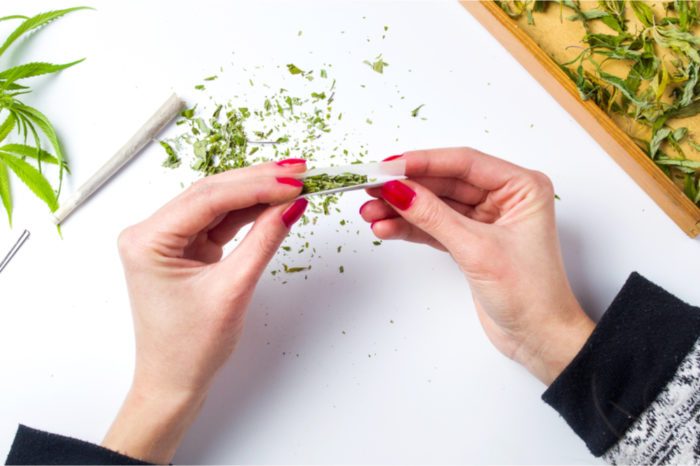Cannabis and opioids work together to manage pain and reduce harm from excess opioid consumption.
Opioid abuse and associated deaths are in the news headlines on a regular basis. In fact, according to the National Institute on Drug Abuse, more than 70,000 Americans died from drug-involved overdose in 2019. Even worse, deaths due to Fentanyl accelerated to include more than 36,359 overdose deaths (2019). Sadly, things got much worse after that and more than 100,000 Americans died from opioid overdose in the first twelve months of the pandemic. Immediate and lasting action is needed to save patients from addiction and early death. Could cannabis and opioids work together to reduce this risk?
Current stats report that, on average, 275 people die in the U.S. every day, from an opioid overdose. We have to do better. Efforts in this direction have failed many patients, with people being abruptly cut off from their opioid medications. The consequences are dire. Sadly, according to the AMA, forty-five per cent of heroin abusers started on prescribed opioids for pain relief. Unfortunately, over the course of the regular treatment, the essential characteristics of the drug easily lead to abuse and dependency.
Cannabis has definitely made inroads in managing chronic pain, at least in legal states. But for some patients, it’s not enough to manage the pain. A recent study out of Columbia University, however, shows that cannabis and opioids can work together. This will reduce the number of opioids needed, thereby reducing harm to the patient.
Cannabis, Opioids, and the CB1 Receptor
Everyone has an endocannabinoid system. In fact, most mammals have one. It is a network of receptors and chemical messengers, such as anandamide, that are present in almost every part of your body. This network is responsible for regulating pain, digestion, memory, the immune system, inflammation, and mood. There are two primary receptors, CB1 and CB2. The endocannabinoid system works to maintain homeostasis in the body by contributing to staving off infection, triggering pain relief, and mounting an anti-inflammatory response.
The phytocannabinoids present in cannabis, such as THC and CBD, interact with this system in much the same way that endogenous cannabinoids do. Each has a unique role in turning these receptor interaction, to ultimately mimic the chemicals produced by our own bodies.
THC has a high affinity for the CB1 receptor, meaning that it readily binds – like a key into a lock. Opioids bind to opioid receptors in the brain. What is interesting about both is that these receptors are co-localized in the area of the brain that processes pain signals. Their relationship to one another is interesting, to say the least. Cannabis and opioids can work synergistically.
What the Cold-Pressor Test Tells us About Pain Management
A study published in Neuropsychpharmacology (2018), explores this relationship between opioids, cannabis, and CB1 receptors. The team of researchers gave participants different doses of cannabis, oxycodone, or some combination of the two, then subjected to them Cold-Pressor Test (holding their hands in a bucket of cold water). The results suggest there is a place for cannabis to mitigate prescription opioid needs.
This double-blind, placebo-controlled, and first of its kind, study determined that cannabis improved the pain alleviation of oxycodone. Although the optimal dose of oxycodone by itself was 5 mg, this dose could be cut in half if participants were also given cannabis.
Interestingly, with independent application, neither cannabis nor the half dose of oxycodone was enough to reduce the experience of pain. But together they had a similar effect as an entire dose (5mg) of an opioid.
The Role of Cannabis in the Opioid Crisis
Some scientists believe that the ability of THC to monopolize the CB1 receptor is part of the reason why it works so well alongside opioids. There is also an idea that opioid receptors and the CB1 receptor communicate and interact with one another. Although this friendly relationship is still poorly understood, it may be why there is such synergy between cannabis and opioids. Finally, there is also evidence that THC promotes the body’s own opioid response, relieving the need for external opioids.
There are three ways in which cannabis mitigates the need for high doses of opioids. First, it interacts with the CB1 receptor to boost mood and induce pain relief. Second, because it activates the CB1 receptor, it promotes increased communication to the opioid receptor — a synergistic relationship. Thirdly, it increases the body’s ability to reduce its own pain through increasing its natural opioid production (anandamide).
Cannabis is Helping Curb the Opioid Epidemic
While researchers continue to get to the bottom of the opioid-cannabis relationship, there is already evidence that cannabis is helping to fight the opioid epidemic in states with legal access to cannabis. It’s still early days, but statistics strongly suggest that increased legalization will reduce the need for heavy duty opioid prescriptions.
Certainly, the relationship between cannabis regulation and opioid overdose needs more investigation. This University of Columbia study, however, gives good evidence that cannabis partners with opioids on killing pain. If patients can take lower doses of oxycodone then cannabis mitigates the risk of addiction. This could translate to less opioid-related deaths and disability.






